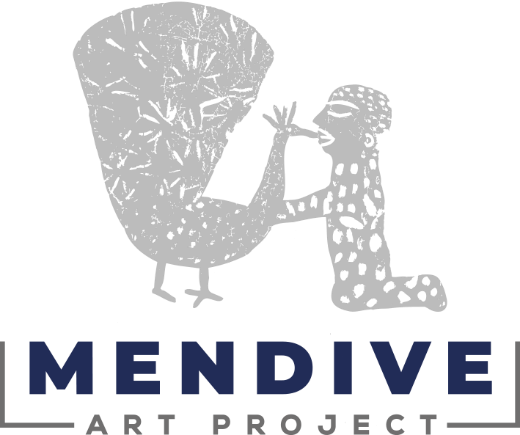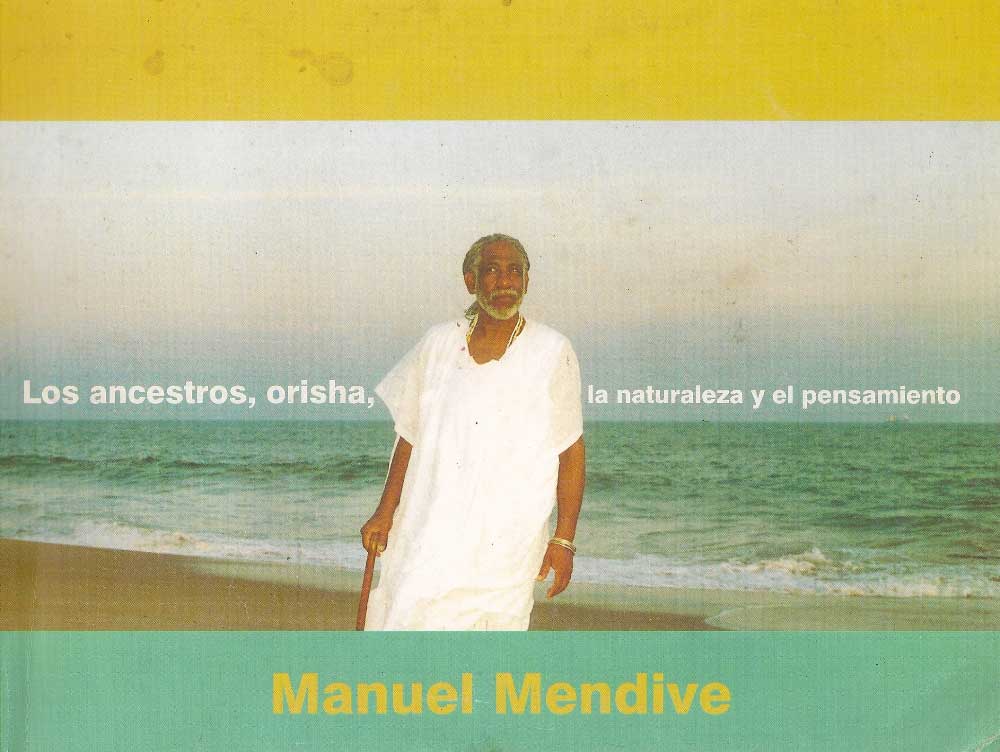A travel is not just going over time and space. A travel is a spiritual transition, in which the creator finds out with his inquiring glance the spaces that, from daily life up to the sacred thing, show the palpitation of the essential, that which goes beyond what’s next.
On his most recent tour by the African countries (June-August 2003), Mendive planned to go over the land of his ancestors. He got there so as to keep feeding from that space, but at the same time, he grasps it with his original perception, allowing that memory of the African reality and of the religious culture, to transcend in his artistic metaphor.
In Africa, Manuel Mendive plunges into that landscape. The artist meets the mother land and his brothers, history and its reverberation at present, and starts another tour: a travel, conversing with the reality, his gods and his inner world. The travel also continues and deepens an account. It is what lets him grasp the visual experience, so as to have his image fecundate by reencountering the African ancestral might, the Orishas, and the energy conveyed by nature. This stands for the main foundation of this thought.
Mendive knows how to auscultate the space for the sacred thing in Benin, in Nigeria, or in Ghana, to show it in his most recent creation Also, in the culture of the Nile, the fundamental problem of the sacred thing and the cult to the Deceased, was the main artistic motivation for the pharaonic empires, whose worship allocated to posterity the tradition of the architecture, of the sarcophagus and of the burial apparel, characteristic of the Egyptian cults. Both in Mesopotamia and in ancient Greece, the sacred thing and the cult to their gods, was the main leit motiv, among other historical reasons, for the creation of an artistic expression which allowed to express the ideas of the divine through an aesthetic language.
In Benin, the texture of ancient woods, the red ochre of the land, and the integration of the mystery to reality had Mendive come near to the space of “La Maison Akabba”, in Ketou, where “The Sacred Doors”, covered with cloths and fixed to the ground, moved by themselves, as a message, a sign which let the King and the community know that there would be an aggression, a trouble.
Regarding the cult to the Orisha Shango in Benin, the artist learned the warlike divinity’ s righteous position, who is able to “possess” one of the initiates, so as to disclose someone who has made a serious offence or to foretell that somebody is the community will be lost.
The city of Badagry, in Nigeria, still preserves the spaces where the Africans were crowded. Those who would travel on slave ships, on that obligatory journey, after going through the “Non-Return Door”. Its dramatism is not showed by the frame of the iron gate, designed to note the existence of a port for slave shipment, but by the chains for the feet and iron stuffs fond nearby.
The features of an ancient castle and the extent of the fortress in Cape Coast, in Ghana, hosted a commemoration. The Castle of Cape Coast was a place where thousands of slaves were concentrated in dark passages, and then heaped up, they were taken on slave ships towards the New World.
From that place of pain, where thousands of Africans were enslaved and rooted out of their African land not to return ever, Mendive painted the bodies of dancers from Ghana and had them dance in a performance, like the Cuacuadebi bird; just as the spirits of the enslaved Africans could fly freely, back to their ancestral land -like thought did- when death broke the chains of slavery.
The perceptions are enriched by a peculiar artistic speech that Mendive shows with the riches of this set of Works. Because of the subtlety of the aquarelles, we can recognize the artist’s glance to grasp the African man’s sensitiveness, absorbed in his gods, and intimately joined to the imagination and the beating of his land.
The Wooden Sculptures, like the cultures from western Africa, where the pieces used for the sacred cults and the daily -life objects / from the Royal Chair to the main door of the dwelling / house- are impregnated of the trace of volume and of the wood textural riches.
The Sacred Tapestries, are also Mendive’s thought and interpretation, come out because of the approach to the sacred spaces and objects in Benin. Such artistic proposal manifests the recreation of experiences and images from a “travel”, as well as his mastery of the plastic techniques, to preserve what relates to the African ancestors, from the artistic codes of the contemporary art and visual culture.
One finds out that, though the first European artistic vanguard caught essential forms in the African sculpture, to elaborate a code from a formal proposal, there are even other forms: the essential form, not only lively, but also vital, that Mendive comes to show us, with new and unedited forms in this exhibit, born of the ceremonies of a little explored but intimate liturgy, immersed in a visual universe, suitable to disclose the ancestral essence to an artist like Manuel Mendive.
It is a visual account passing, as a form, beyond the description of the cult’s space, beyond what the African speech itself intends to show. It is a sample of a cultural approach, wholly mastering the speech, of a free spirit, whose imagination and creative capacity, is able to convey the essence of the sacred and the significance of the orishas, with a language renewed by the universal scope of this spirituality.
Phd. Guillermina Ramos Cruz
Barcelona, October 27, 2003.

